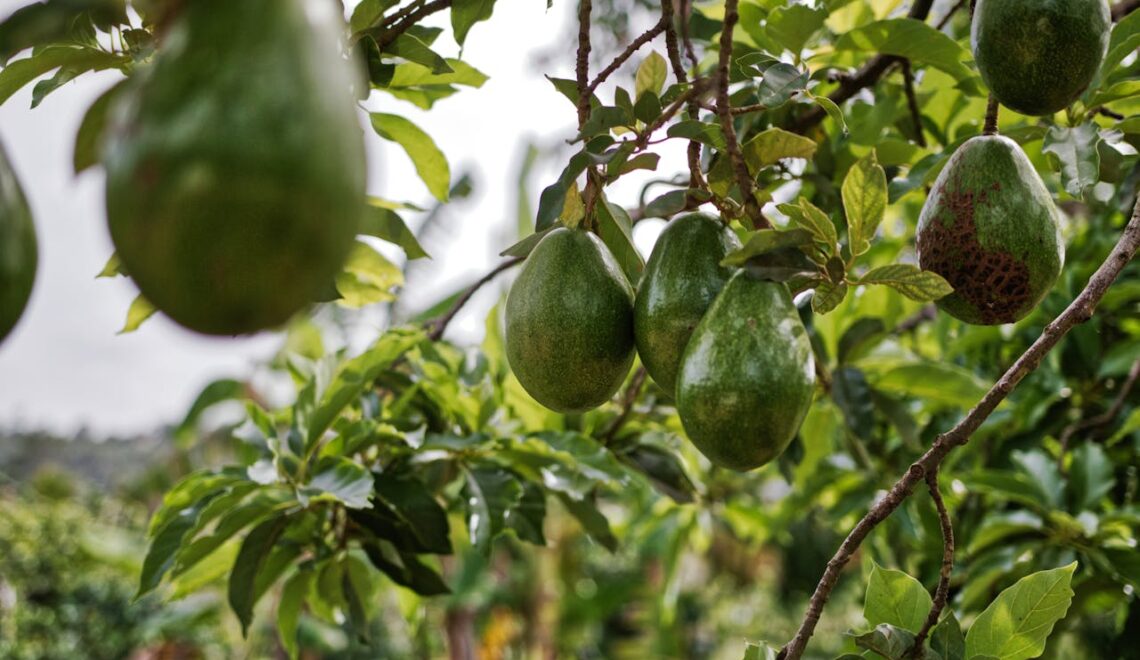
One of the most satisfying gardening projects you can do is growing your very own avocado plant from a seed. Although you won’t be getting fruit-bearing trees from shop-bought avocados, you will be making wonderful indoor plants that can reach a height of 10 feet.
This is a surprisingly easy process that, much like most simple do-it-yourself projects, has a low cost of entry. Whether you decide to use the traditional water method or plant the seed directly in soil, both approaches can result in healthy plants if you provide proper care and some time.
This step-by-step guide will walk you through every aspect of avocado seed propagation, from setting things up to maintenance. You will become familiar with two proven strategies, learn important growing techniques, and avoid the traps that kill most young plants.
Advantages of Cultivating an Avocado Plant
Contents
1. Visual Appeal
Avocado plants have large, glossy, green leaves and an elegant growth pattern. With their tropical touch, avocado plants are a wonderful addition to any indoor space and can instantly make the place more elegant. They can also serve as stunning conversation starters.
2. Educational Value
Growing avocados teaches one the value of patience and plant biology. You will be able to witness the entire germination process and root system, and a leaf will eventually sprout. Thus, a fantastic project to do with your kids.
3. Air Purification
Just like other indoor plants, avocado trees help to purify the air indoors by getting rid of toxins and producing oxygen. Well-grown avocado trees can greatly enhance the air quality in your home. You may look at additional resources such as NASA’s Clean Air Study or the University of Vermont Extension to learn more about the air-purifying capabilities of houseplants.
4. Long-term Satisfaction
While indoor plants may not bear fruit, outdoor trees in the right climates can bear avocados in 5 to 7 years. Regardless of whether they bear fruit, seeing your seed grow into a full-sized tree is very satisfying.
5. Cost-Effective Hobby
This hobby is very inexpensive, as you can start for virtually no money, other than the cost of an avocado you eat. Thus, this is a hobby everyone can enjoy regardless of their budget.
How to Plant an Avocado Seed in Water

Image Source: pennington.com (Avocado Seed in Water)
The water method is the most popular technique for beginners because you can observe root development throughout the process.
What You Will Need
- An avocado pit
- A sharp knife
- Toothpicks (4)
- A see-through cup or glass
- Water at room temperature
Step-by-Step Process
Step 1: Seed Preparation
Take an avocado that is ripe. Hold the pit gently and try to rinse the pit with cool water, removing all avocado bits. Don’t take off the brown layer that covers the pit.
Step 2: Memorize the Orientation
Identify and separate the top and bottom parts of the seed. It has a pointy tip and a rounded bottom. The pointy end is the one that goes up, and the rounder, flatter side is down.
Step 3: Place Toothpicks
Place both ends of the seed in water. It should be in a glass and should be half submerged and half above the water.
Step 4: The Water Balanced Seed
Your setup should be in a warm area that has light that is bright but indirect. Direct light should be avoided since it will heat up the water, which is not ideal for the seed.
Step 5: Choose The Perfect Spot
The seed needs to be at a temperature that is room temperature with water that is at the glass. You can adjust the water however you want, or adjust the temperature of the room.
Step 6: Maintain Water Levels
Every day, you gotta check the water levels and make sure to refill the water if the water levels have become low. Also, make sure the bottom of the seed is always submerged. Change the water completely every 5-7 days to keep bacteria from growing.
Timeline Expectations
- Week 2-4: The seed splits, and a taproot emerges from the bottom
- Week 4-6: The root system develops and thickens
- Week 6-8: A stem shoots up from the top, and the first leaves follow shortly after.
How to Plant an Avocado Seed in Soil
Directly planting the seed in the soil tends to make the root system stronger and avoids the shock of being transplanted after starting in water. The Missouri Botanical Garden and the University of Florida IFAS Extension have reliable information.
Materials Needed
- Avocado pit
- Potting mix with good drainage
- Pot with a diameter of 6-8 inches and drainage holes
- Spoon
- Plastic wrap (optional)
Step-by-step process
Step 1: The Seed
The pit should not be cleaned as it should be left dry for 1-2 days. During this period, it helps in preventing any decay and helps in sprouting.
Step 2: Soil Preparation
A good quality soil with good drainage is essential for good growth. Try using a mix for cactuses or succulents that is specifically made for avocado seeds.
Step 3: Plant the Seed
Once you have the soil prepared, the next step is to plant. Position the seed upward with the pointed end facing up. Make sure that the soil is firm but not packed around the seed.
Step 4: Initial Watering
Hold your spray bottle of water to the soil with the misting portion facing downward. Watering in this way will avoid the seed from getting waterlogged.
Step 5: Create Humidity
To maintain the humidity in the pot, cover it with plastic wrap, but don’t forget to add holes for fresh air. Make sure to remove the plastic cover after the seeds have sprouted.
Step 6: Provide Optimal Conditions
Ideal locations are south-facing windows with sheer curtains providing bright, indirect light. Make sure the temperature is not lower than 70°F or higher than 85°F.
Check the soil every 2-3 days to ensure the soil is damp but not soaking wet. To ensure the organic seeds germinate, do not overwater.
Tips for Growing a Healthy Avocado Plant

Image: Healthy Avocado Plant
1. Lighting
Avocado prefers bright, indirect light. If the light is too direct, the leaves will dry out. On the other hand, too little light causes the plant to grow weak and leggy.
Take note of the following light tips:
- Place the plant in south or west-facing windows, but ensure the light is filtered.
- Rotate the plant once a week so all sides receive equal light.
- Use grow lights in winter
- Leaves yellowing indicate a lack of light, so monitor closely.
2. Watering
Proper watering is crucial for health, as consistent moisture without sogginess is optimal for the avocado.
Follow these watering principles:
- Water when the top inch of soil is dry to the touch
- Water until moist and empty drainage trays in 30 minutes.
Video Resource:
3. Temperature and humidity
Like the rest of its family, avocado prefers warm, humid areas.
Maintain these conditions:
- Temperature range: 65-85°F
- Humidity level: 50-60%
- Avoid cold air drafts and heating vents.
- Use humidity trays during dry seasons
4. Fertilizing Schedule
Young avocado plants benefit from light fertilization throughout the growing season.
Fertilizer recommendations:
- Monthly application of balanced liquid fertilizer 10-10-10
- Reduce to half strength to avoid burning the plant.
- Fertilizing pause during winter dormancy.
- Over-fertilization is indicated by yellowing leaves. Grab the scissors and trim.
5. Pruning and Shaping
Regular pruning helps foster healthy bushy growth and keeps the plant from getting too tall for indoors.
Pruning techniques:
- Pinch growing tips at 12 inches to encourage bushy growth.
- Take out all dead and damaged leaves.
- Leggy stems: trim down by one-third.
- Best results pruning in spring.
Check out this video:
Common Mistakes to Avoid
1. Overwatering
Over-watering is the leading cause of death for the avocado plant. If the soil is too soggy, root rot develops quickly, stunting the plant within days.
Some signs of overwatering are:
- Leaves that are yellowish and mushy.
- Soil that smells bad.
- Roots that are black and soft.
- Stunted growth.
- Not enough drainage.
2. Insufficient Drainage
To avoid root problems, avocado plants need excellent drainage. If the pot has no drainage holes and is filled with heavy clay soil, this is bad news.
To avoid water pooling in soil, make sure to:
- Have planting containers with multiple holes for drainage
- Mix heavy soil with sand or perlite
- Put gravel at the bottom of the pot
- Avoid using decorative pots with no drainage holes
3. Wrong Seed Orientation
Planting seeds upside down results in weak plant life or no life at all. The pointed side has to face upwards to emerge and thrive.
To avoid shocking the delicate root system, gradually transitioning water to soil prevents abrupt movement and helps avoid root system shock.
4. Transplant Shock
Moving water-started seeds to soil too abruptly can shock the delicate root system. Gradual transition prevents transplant failure.
Minimize transplant shock by:
- Waiting until roots are 2-3 inches long
- Using room temperature water initially
- Gradually reducing water levels over several days
- Choosing a loose, well-draining potting mix
5. Inadequate Patience
Avocado seeds can take 2-8 weeks to germinate. Many people give up too early, tossing seeds that are actually still good.
Remember that germination is dependent on:
- How fresh and viable the seed is
- A steady temperature
- Correct moisture levels
- Correct lighting
To wrap up:
Avocado seeds are a great way to learn and enjoy the gardening process. Water methods are great for visualization, and planting directly in soil encourages sturdy root systems. Regardless of the methods used, success requires patience and careful attention.
Don’t forget that healthy avocado plants need bright but indirect light, consistent moisture, and warm temperatures all year round. Pruning your plant regularly helps it stay manageable and bushy, not tall and leggy.
Even though your homegrown avocado plant won’t bear fruit indoors, it can still be a beautiful houseplant for you to enjoy for years. Watching a tree grow from a seed you nurtured brings a great sense of accomplishment, and that makes this gardening project worthwhile for everyone, no matter your skill level.
Follow this guide and start your journey today. You’ll have a stunning tropical plant in just a few months.
Frequently Asked Questions
How long does it take for an avocado seed to germinate?
Avocado seeds can take anywhere from 2-8 weeks to germinate. Some seeds take up to 12 weeks, so patience is key.
Will my avocado plant grown from seed produce fruit?
It’s very unlikely. Avocado plants grown from store-bought seeds don’t bear fruit, especially indoors. They’re mostly grown as ornamental house plants. To bear fruit, grafted trees and specific conditions are needed.
Can I plant my avocado seed directly outside?
You can only do this in USDA Zones 9-11, where temperatures do not drop below 50°F. In other regions, start the seeds indoors and then transition them to the outdoors during the warm months. During the winter, you will need to bring them indoors.
Why is my avocado seed not sprouting?
Some common issues with avocado seeds not sprouting are due to old or damaged seeds, moisture levels, temperature, or the seed simply needing more time to sprout. It is best to make sure the seed conditions and the seed itself are fresh.
When should I transplant my water-started avocado seed to soil?
Transplant when the roots are 2-3 inches long and the stem has a few leaves. This is usually 6-8 weeks after the roots first start to emerge.
How big will my indoor avocado plant grow?
With regular pruning, indoor avocado plants will grow to a height of 6-10 feet. Without pruning, they may become much taller; however, they may become unstable and difficult to manage.






